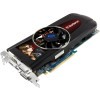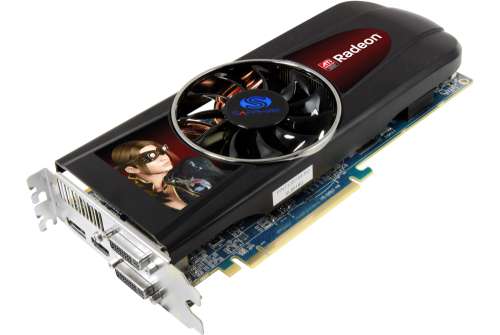- Qualcomm Launches Snapdragon 4 Gen 2 Mobile Platform
- AMD Launches Ryzen PRO 7000 Series Mobile & Desktop Platform
- Intel Launches Sleek Single-Slot Arc Pro A60 Workstation Graphics Card
- NVIDIA Announces Latest Ada Lovelace Additions: GeForce RTX 4060 Ti & RTX 4060
- Maxon Redshift With AMD Radeon GPU Rendering Support Now Available
ATI Radeon HD 5830 – AMD Completes its HD 5000 Line-up

In what might be a record, AMD managed to release both the first and final normal model from its HD 5000-series in a mere five months. The final card is of course the HD 5830, which falls comfortably between the HD 5770 and HD 5850, and has the $240 price tag to prove it. So regardless of your given budget today, AMD has a card for you.
Page 11 – Final Thoughts
Since AMD launched its first HD 5000 model, the HD 5870, we’ve taken a look at every single-GPU model from the series. The HD 5830, though, is the first one where I’ve had a hard time forming a conclusion, because overall, it’s kind of a strange beast. Though it does fit nicely into AMD’s line-up, it still feels like a card that’s just being tossed in for the fun of it.
The fact that we received a card that essentially looks like an HD 5870, yet is much slower, is the first tip-off. As mentioned on the opening page, retail cards will not be as long as the sample we received, but the fact that we did receive a sample like that really proves that the card is simply an HD 5870, just clocked down, and with stream processors shaved off (or it can be assumed that these are HD 5870 chips that didn’t quite make the cut, so were re-purposed).
I don’t mean to downplay the card, though, because regardless of how it was formed, it does fill the much-needed gap in the current Radeon line-up. Before this card, we had a massive stretch between $170 and $310, and the HD 5830 falls smack dab in the middle. Plus, its performance scales just as we’d expect, given its placement, so there’s not too much to dislike.
The hard sell will be the fact that in most cases throughout our tests, the GTX 260 managed to keep up to the HD 5830. With the latter selling for around $240, and NVIDIA’s card selling for $215, it’s difficult to explain to an end-user that the HD 5830 is worth the premium, despite being no faster. Most people who are reading this already have opinions on this I’m sure, but what exactly is it that sets ATI’s card apart?
The biggest one is the fact that NVIDIA’s GTX 260 is already outdated in terms of current architecture. It was released about a year-and-a-half ago, and lacks a major feature that all HD 5000-series cards have… DirectX 11. NVIDIA will try to downplay the importance of DirectX 11 as it stands today, but you can be certain that as soon as its Fermi-based cards are available, its tune will be changed fast.
The fact is, DirectX 11 looks to have a far faster upswing than DirectX 10 (which was a turtle’s-pace, honestly), so to purchase a non-DX11 card today could be considered a bit strange, especially if you plan on buying one that’s going to last you for a while. That’s where AMD’s current line-up shines, because it not only has things like DirectX 11, but it also has Eyefinity, the feature-rich multi-monitor technology, and also far-improved temperatures and power consumption compared to NVIDIA’s collection.
My personal opinion is that I wouldn’t recommend going with a non-DX11 card today, because if you care about games, you don’t want to be left in the dark when some really stellar titles hit the PC in the future. ATI’s card might not blow away the GTX 260, but it has other perks that make up for it, which make the premium it demands worth it. If I had to choose between the two, I would currently pick ATI in a heartbeat, but it comes down to a matter of opinion. If you don’t at all care about power consumption, temperatures, DirectX 11, or Eyefinity, then other options definitely exist.
While I still feel like the HD 5830 feels kind of like a product that was just shoved in somewhere, it’s really great to see AMD’s line-up finally completed. Now all we have left to do is wait for Fermi to hit, so that things can really be shaken up!
Discuss this article in our forums!
Have a comment you wish to make on this article? Recommendations? Criticism? Feel free to head over to our related thread and put your words to our virtual paper! There is no requirement to register in order to respond to these threads, but it sure doesn’t hurt!
Support our efforts! With ad revenue at an all-time low for written websites, we're relying more than ever on reader support to help us continue putting so much effort into this type of content. You can support us by becoming a Patron, or by using our Amazon shopping affiliate links listed through our articles. Thanks for your support!






